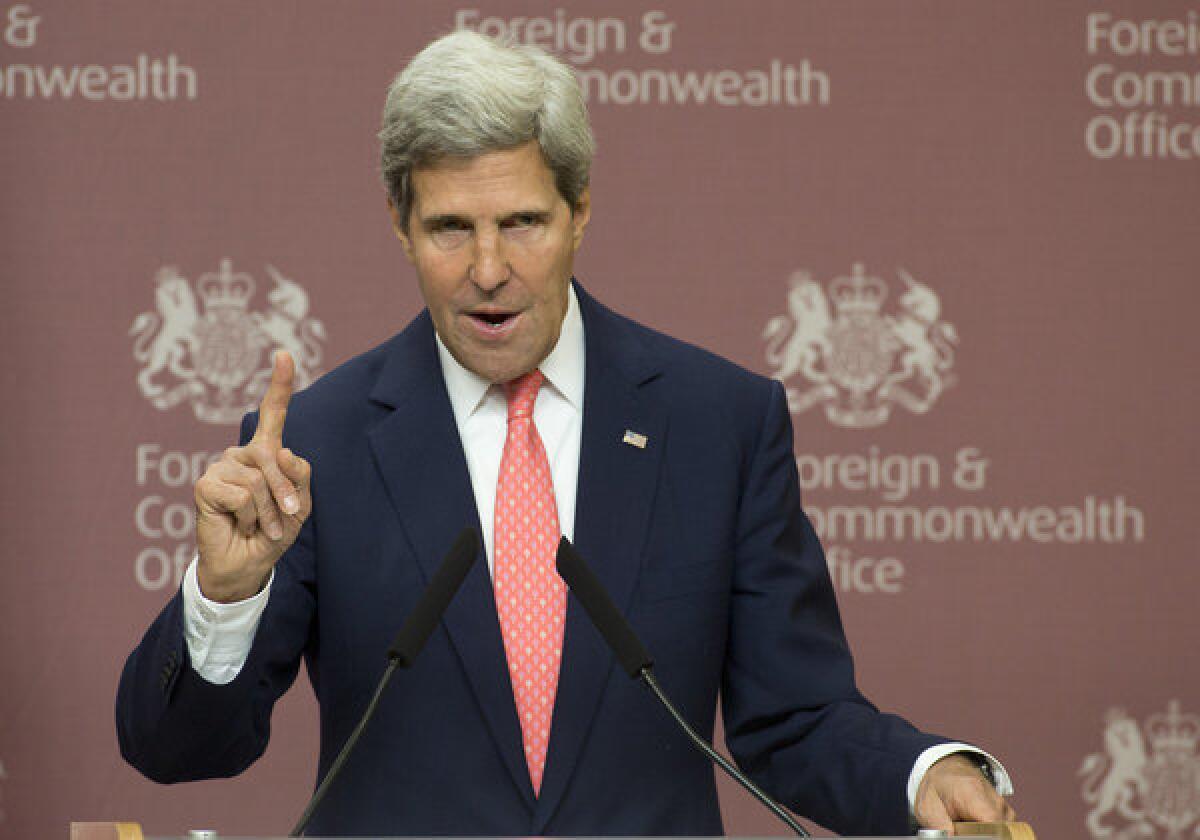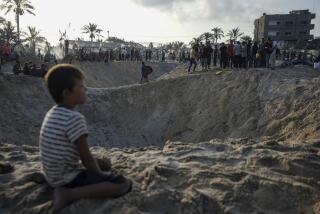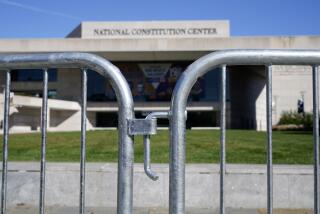Securing WMD? It’s been done

Secretary of State John F. Kerry was probably right when he said “it can’t be done,” referring to getting Syria, in a week’s time, to surrender control of its chemical weapons. But timelines aside, compelling a Middle Eastern state through threat of military action to hand over weapons of mass destruction not only can be done, it has been done.
The success happened in Iraq, not a place where the word “success” is often applied, particularly in a U.S. foreign policy context. It happened after the 1991 Persian Gulf War when a combination of sanctions, military pressure and United Nations inspections forced Saddam Hussein to give up his WMD.
For political as well as practical reasons, this success went unnoticed and unacknowledged, even by the U.S. intelligence community that helped bring it about. A dozen years later, the second Bush administration invaded Iraq based on the inflated charge that Baghdad still possessed a deadly arsenal. When it turned out there were no WMD in Iraq, the United States was stuck with the painful consequences of its own military action.
TRANSCRIPT: The argument for action on Syria
Amid the fallout from that misjudgment, few bothered to consider how it came to pass that Iraq had no WMD at the time of the U.S.-led invasion in 2003, though it had definitely used such weapons against Iran and against its own people.
What happened was that a combined international effort, backed by U.S. military power, compelled the regime in Baghdad to abandon its WMD programs and destroy its weapons stocks. It wasn’t done in a week, but it was done with surprising rapidity. We now know, based on the 2004 report to the U.S. intelligence community by Charles Duelfer’s Iraq Survey Group, that Hussein destroyed most of his chemical and biological weapons in 1991, in the months following the coalition victory in the Persian Gulf War.
“Iraq unilaterally destroyed its undeclared chemical weapons stockpile in 1991,” Duelfer reported. “There are no credible indications that Baghdad resumed production of chemical munitions thereafter, a policy ISG attributes to Baghdad’s desire to see sanctions lifted, or rendered ineffectual, or its fear of force against it, should WMD be discovered.”
On Iraq’s nuclear ambitions, the Duelfer report was similarly definitive: “Saddam Hussein ended the nuclear program in 1991.... ISG found no evidence to suggest concerted efforts to restart the program.”
And on biological weapons, Duelfer reported that “in 1991 and 1992, Iraq appears to have destroyed its undeclared stocks.”
Note the concentration of activity in 1991. The underlying message is important: Maximum Iraqi compliance coincided with maximum coalition military leverage in Iraq.
Several factors prevented this disarmament success from gaining the recognition it deserved. For the second Bush administration, of course, what the Duelfer report brought to light was more an embarrassment than anything else, disclosing, as it did, the magnitude of the misjudgments before the 2003 invasion.
The first Bush administration, which deserves much of the credit for the U.S. role in disarming Iraq, understandably regarded the regime in Baghdad with deep suspicion, an attitude that continued under President Clinton. Neither George H.W. Bush nor Clinton “declared victory” with regard to Iraqi WMD because to do so ran counter to the policy of continuing military and economic pressure on Baghdad. U.N. inspectors, who had long experience with Iraqi evasions and lies, were never quite able to satisfy themselves that they’d compelled Baghdad to get rid of everything, even though they had.
Any caveats that Hussein might possibly have some WMD stashed away played into the hands of the second Bush administration, which maintained a deep distrust of the U.N. as an effective foreign policy tool. To accept U.N. reports that no weapons stocks could be found would mean endorsing the concept of U.N. inspections, something the second Bush administration was loath to do. One of the tragedies of the run-up to the invasion of Iraq is that military threats from the U.S. helped get U.N. inspectors back into Iraq one last time. But the Bush administration simply wasn’t interested when they reported they couldn’t find any WMD.
Distrust of Hussein, distrust of the U.N. and distrust of the ability of U.S. intelligence to collect all of Iraq’s WMD secrets, plus a desire to act unilaterally and flex U.S. muscle in the wake of the 9/11 attacks — these, then, were the ingredients that led to the greatest U.S. foreign policy disaster since the Vietnam War. The scope of the disaster, in turn, obscured the basic fact that the U.S.-supported U.N. inspection regime had worked.
If the Obama administration pivots now and embraces a weapons hand-over from Syria, President Obama could cite this under-the-radar Iraq success story as one cause for cautious optimism about controlling those chemical weapons. It shows that U.N. inspections wouldn’t work without the credible threat of the use of force. Right now, the credibility of that threat is under serious question as the White House struggles to muster support in Congress for a military response to Syria. But Bashar Assad’s eager grab for the opening created by Kerry’s comments makes clear that the Syrian regime takes the threat seriously.
Those engaged in designing a plan to inspect, catalog and secure or destroy Syria’s arsenal should know that a blueprint already exists.
John Diamond is the author of “The CIA and the Culture of Failure.”
More to Read
A cure for the common opinion
Get thought-provoking perspectives with our weekly newsletter.
You may occasionally receive promotional content from the Los Angeles Times.










